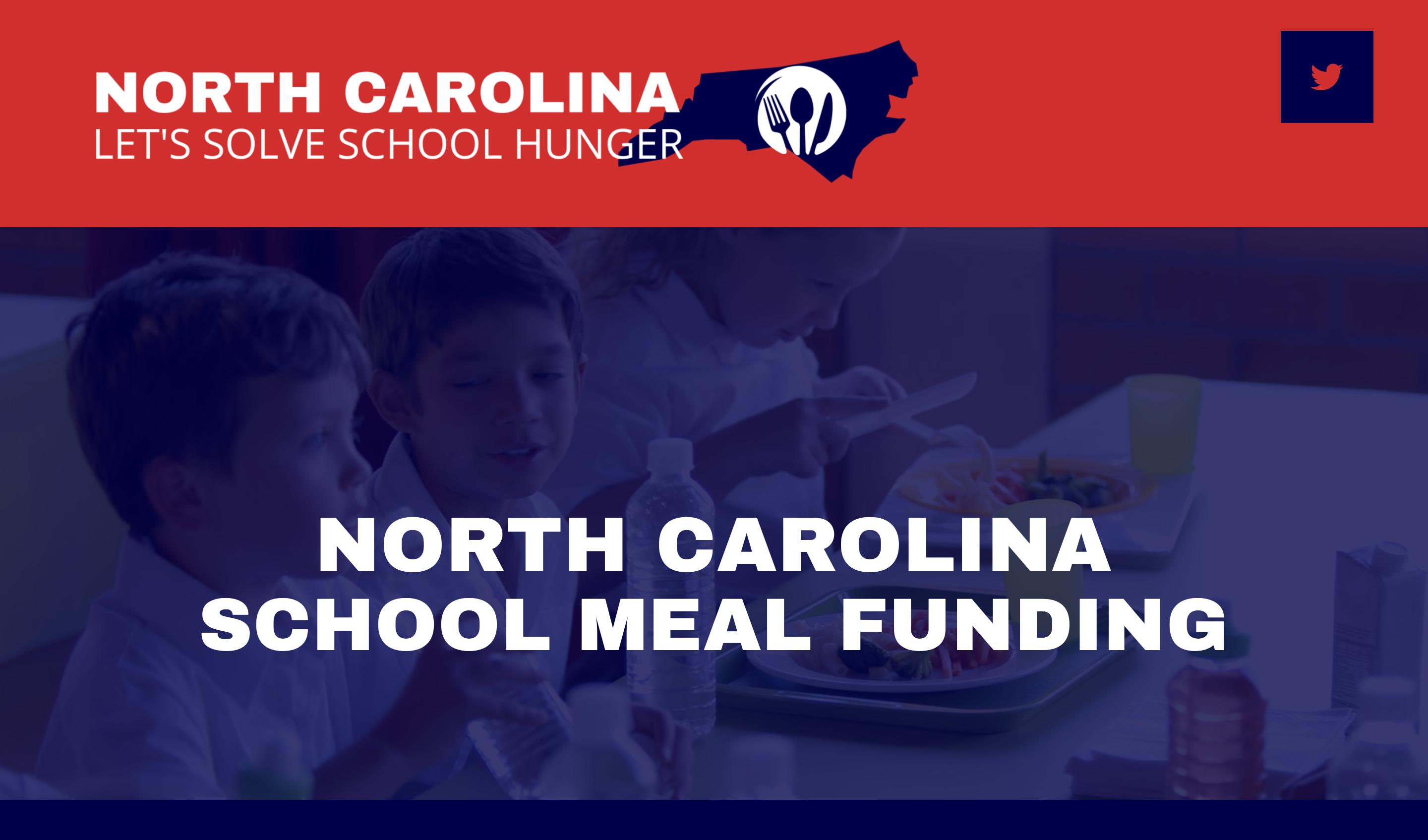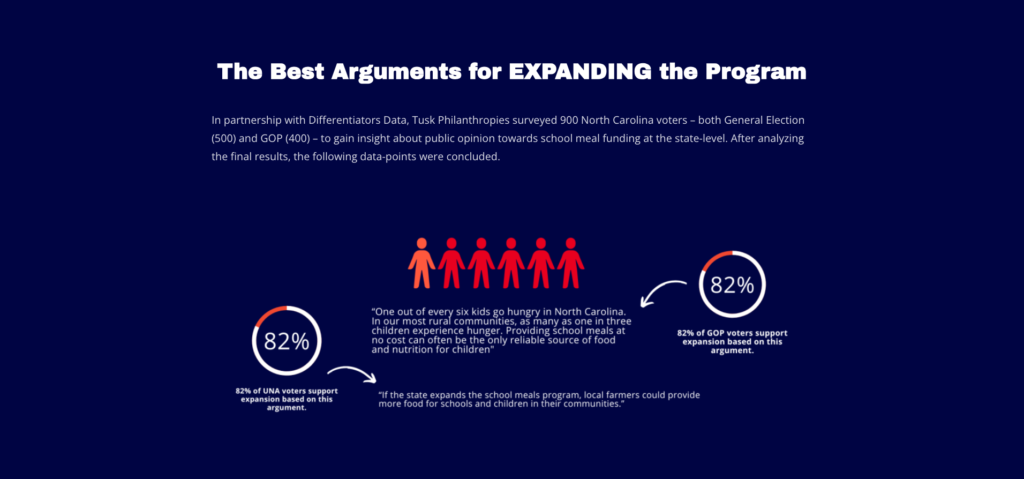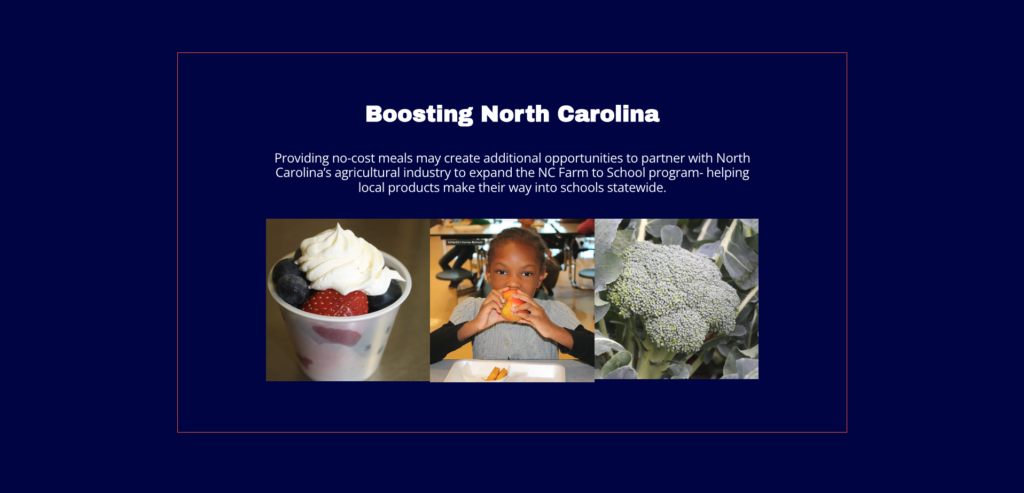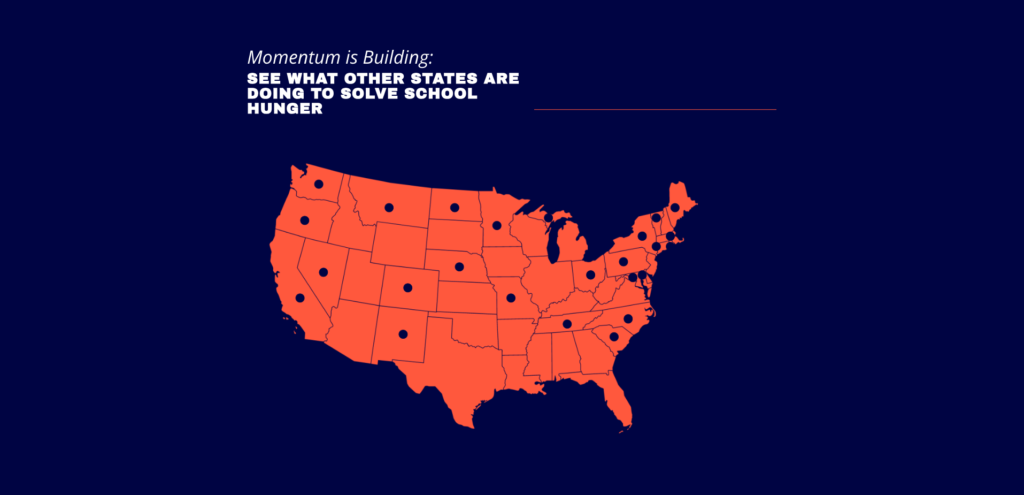School Meals Case Study
In the wake of the 2023 North Carolina budget, the landscape of school meals and nutrition faced a critical challenge – the loss of prior COVID-19 funding that ensured free meals for students across the state. Sinclair PA began working with Tusk Philanthropies’ Solving Hunger in 2023 after the national organization selected NC as one of their targeted campaign states.
The stage was set for a successful advocacy campaign – where innovative strategies and passionate advocacy came together to combat school hunger.

As the effects of COVID-19 swept families across the nation, what emerged was universal school lunch funding, offering free meals to students for two entire school years. However, this lifeline was set to expire during the 2023-2024 school year, leaving North Carolina schools and families to face the rapid increase in school meal debt. School districts were at a crossroads, facing tough decisions that ultimately impacted the well-being of their students.
The Vision
Solving Hunger came to North Carolina with a track record of success in legislative campaigns across the US, expanding access to meal programs through universal funding. As the NC legislative session began, the mission was clear: expand school meal benefits and ensure access to free school meals for all NC students. Sinclair PA joined a comprehensive legislative outreach team – committed to finding the right path forward for North Carolina.
The Strategy
Sinclair PA began educating key decision-makers – North Carolina’s legislative leaders – about the growing problem at hand, how it was impacting students back in their districts and the potential solutions. As the campaign progressed it became essential to convey that this critical issue could be addressed, and federal funds could continue to increase access through the Community Eligibility Program (CEP) in order to help feed more NC students.
The plan included:
- Conducting a voter survey to demonstrate widespread support for school meal funding
- Developing key messaging derived from survey results
- Launching a compelling landing page on the issue (Visit the award-winning Solving Hunger NC landing page)
- Collaborating with external stakeholders to share polling data with key legislative leaders
- Creating an impactful digital awareness campaign
A Successful Campaign
The budget passed with expanded and substantial funding towards free school meal expansion statewide, including:
- Additional funding to help qualifying schools meet CEP funding needs, allowing all students in eligible schools to have access to free meals
- Students who were paying a reduced meal rate will also receive free meals, covering approximately 25,000 additional eligible students.
- Alleviation of administrative penalties for students who are unable to pay their school meal debt



